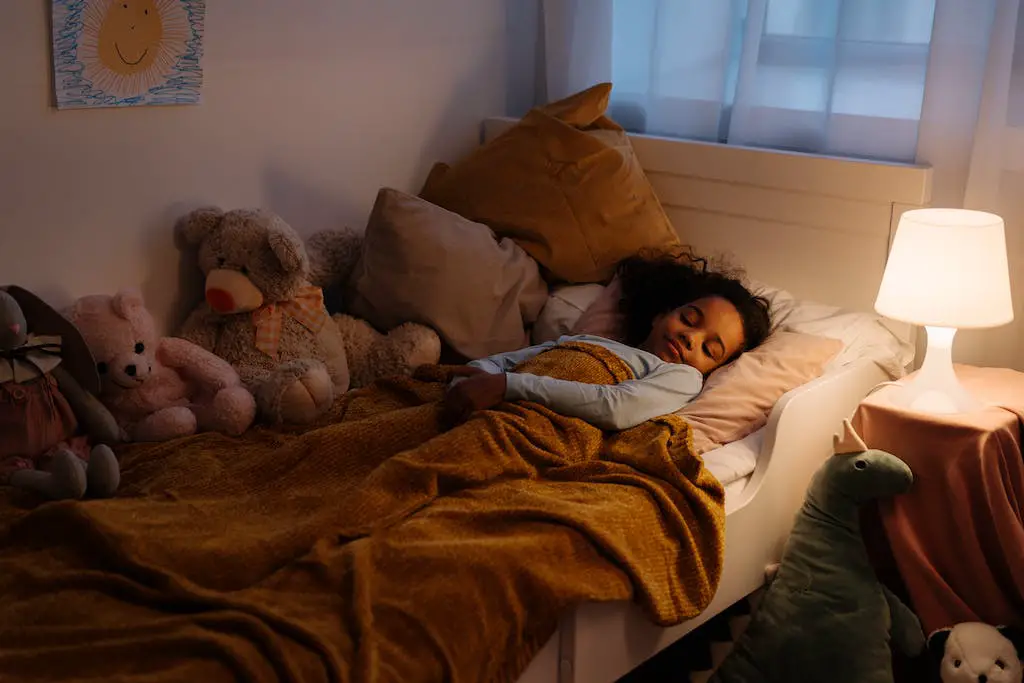How To Teach Your Child To Sleep Alone
Image Credit: Pexels. CCO Licensed.
Are you fed up with having to share your bed with little humans? Is it time they learnt to sleep in their own bed? 9 out of 10 parents regularly co-sleep with their baby. Some of us are happy to do this, but for many of us it’s a last resort solution after many failed attempts to get them to settle in their bed.
Of course, all children eventually need to learn to sleep in their own bed. Not only that, but they need to learn to fall asleep without you holding them or sitting there in the room. And finally, when they wake up in the night, they need to learn to not automatically crawl into your bed.
Encouraging kids to feel comfortable sleeping in their own bed is often a multi-step process. It will take time and patience and there may be setbacks. But if you stick with this process it should work.
Note: This post may contain affiliate links, which means if you buy from my link I might make a small commission. This does not affect the price you pay. See the full affiliate disclosure here.
Step 1: Create a bedtime routine
The first most important step is to set a bedtime and a bedtime routine. This gets kids used to going to sleep at a certain time. Having a specific routine beforehand will naturally help your child to mentally prepare for sleep, so that when it’s time to go to bed they do so without needing to be pressured or comforted.
The earlier in your child’s life that you can establish a bedtime routine, the better chance you have of them following it. You can start practicing a bedtime routine when they are a baby. This could include giving them a bath, putting them in a sleepsuit, laying them in bed and then giving them a bottle. As they get older, you could tweak this by adding in activities like brushing their teeth and reading to them. Just make sure to avoid any energizing activities.
Step 2: Get them used to not falling asleep in your arms
At first, it will likely be easier to get your baby to fall asleep by holding them in your arms. Some babies like to be rocked or patted, while others simply find it comforting to be in their mom or dad’s arms.
Of course, you don’t want this to be the only way of getting them to sleep. If a baby won’t nap without being held, you’ll need to gradually get them used to falling asleep without physical contact. Start by letting them fall asleep in your arms, but put them down while they are still drowsy. Continue to touch or stroke them if they start crying but try to resist picking them back up.
From here, you can slowly get them used to being put down when it’s time to sleep. And while you may have to touch them or pat them when they fall asleep, they may eventually learn to not need this so long as they know you’re close.
Step 3: Get them used to falling asleep in their bed
Some parents let their baby fall asleep on the sofa, but ideally you want them to fall asleep in their bed so that you’re not having to then carry them to bed. So instead of trying to settle your baby on the sofa, take them directly to their crib when it’s time to sleep.
Practice laying them directly in their bed with their bottle rather than trying to get them to sleep in your arms and then putting them in their bed. You may face some resistance at first, but it’s important that you don’t pick them up and let them fall asleep in your arms. If you do feel you have to pick them up because they’re crying a lot, do so until they’re comforted and then put them back.
Step 4: Get them used to falling asleep in their bed without you present
The next step is being able to walk away while they are still awake in bed and letting them fall asleep without you in the room. This may take some time – many young kids want to know that their parents are still there with them when they fall asleep.
It’s possible to train babies to fall asleep without you being present, but you may find that they start crying as soon as you exit the room. Controlled crying methods may encourage your baby to learn to settle themselves without you, but not all parents may be happy with this method. Waiting until your baby is a toddler could make it easier as you can more easily reassure them not to be frightened. In fact, you could start by leaving them alone and telling them that you will be in the next room until they fall asleep so that they know you’re still close. Having soft toys to cuddle up with, a night light or lullaby music may provide comfort to many kids.
Step 5: Teach kids to return to their bed when they wake up
It’s important that kids aren’t just falling asleep in their own bed but also staying in their own bed. Toddlers will likely be able to crawl out of their bed and come in your bed when they wake up, but you need to make a point of not letting them sleep in your bed – take them back to their bed and get them settled, before returning to your bed.
If kids can’t get back to sleep in their own bed, be prepared to sit with them for a bit until they feel at ease again. Make sure that kids aren’t getting woken up in the night by neighbors or by other noises. If kids get up in the middle of the night and think it’s the morning, you’ll need to reassure them that it’s still night time. Putting a clock in their room and teaching them how to tell the time could help them to learn when it is too early to get up. Blackout blinds could also help to block out the early morning sun in summer.







